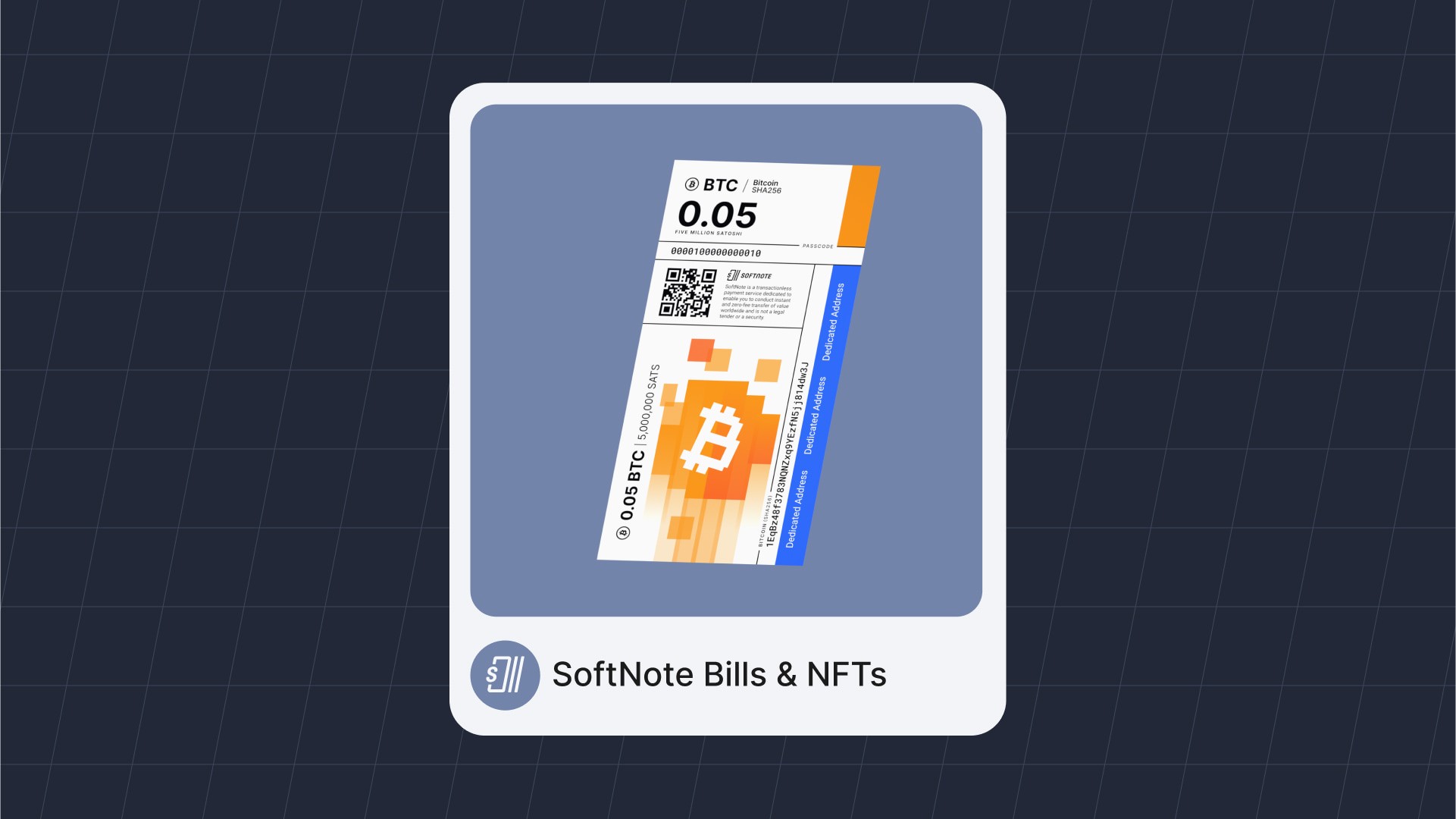Over and over again, many people keep asking if SoftNote Bills are NFTs. This is unsurprising, considering that Tectum (the fastest blockchain) is compatible with smart contracts. Well, the short answer is NO – SoftNote is not an NFT. While they may share some characteristics, they are not exactly the same.

This article will share comprehensive insights as to what both technologies are and what they represent. We believe that doing so will enlighten people better and give them a deeper understanding of certain aspects of Web3. In fact, readers will be able to educate other people on these concepts using very clear terms.
Before differentiating these different concepts, let us examine them separately. After that, we can put them side-by-side and outline how they differ.
What are NFTs (Non-Fungible Tokens)?
NFTs are assets that have been tokenized on a blockchain to be unique and secure, such that they cannot be imitated. This is the technical definition of what non-fungible tokens are all about. But not everyone is a techie and will understand that definition. In this regard, this article will simplify this term.
When most people hear of NFTs, they only think of funny-looking pictures being bought and sold for ridiculous prices. Well, this is very far from the truth. In fact, artworks are just a tiny part of non-fungible tokens. Let’s examine the meaning of the term as stated in the previous paragraph.
So, we highlighted that NFTs are assets that have been tokenized on a blockchain. What this means is that anything can become an NFT, from songs and videos to land ownership documents and even wills. For a better understanding, see them as a safe lock of sorts. Instead of keeping paper copies of important files, you can simply mint them as NFTs.
Should you decide to sell your house, you can transfer the non-fungible tokens to the person buying it from you. Unlike regular PDF or standard digital copies, nobody can replicate an NFT. The reason is that each NFT has a unique identification number that holds the ownership details and history of previous holders. It is such that a simple block explorer scan will help to separate the real document from the fake one.
To better understand NFTs, you have to be familiar with the world of artworks. Just as people spend millions of dollars on a painting, the same principles apply to NFTs. That said, the bottom line is that an NFT is a digital representation of an actual item.
What are SoftNote Bills?
SoftNote Bills are crypto certificates that you can use for a Bitcoin payment or send and receive other types of cryptocurrencies. What makes SoftNote Bills special is that they are very secure and completely protect user data on the blockchain. This means that the person receiving the Bitcoin or Ethereum you are sending cannot ascertain your name or how much is left in your account.
Instead of storing and transferring your Bitcoin using the regular BTC network, SoftNote allows people to send and receive crypto for free on the T12 protocol. Think of it like a bag for carrying your Bitcoin anywhere you go. Despite migrating the tokens to the Tectum blockchain, users still maintain ownership of their tokens. They can spend their crypto as they want and at their personal discretion.
Another exciting feature of SoftNote Bills is that they can be sent to anyone in any part of the world. More so, users can send them to people who do not have a blockchain wallet. This innovative solution allows individuals to send Bitcoin, Ethereum, USDT, or other crypto using a QR code. Compared to the standard process of sending cryptocurrencies, this is far more straightforward.
Difference Between SoftNote Bills and NFTs
Going by the explanations and descriptions of both solutions, it is quite evident how they are similar and how they differ. For a better explanation, below is a comparison of these diverse technologies:
- NFTs are digital representations of real assets, while SoftNote Bills are crypto certificates.
- SoftNote is focused on cryptocurrencies, while NFTs are focused on digital items.
- Transactions done through SoftNote Bills are free of charge when done on the T12 protocol. While NFT transactions are done on the ERC-20 network are usually very expensive.
- Both the sender and receiver need to own a blockchain wallet for a successful NFT transfer to occur. On the other hand, people can send and receive cryptocurrencies using SoftNote Bills without having cryptocurrencies.
Meanwhile, there has been an unending question that our users have been asking. It is whether we will be minting NFTs. This is a possibility, but it will be later in the future.
